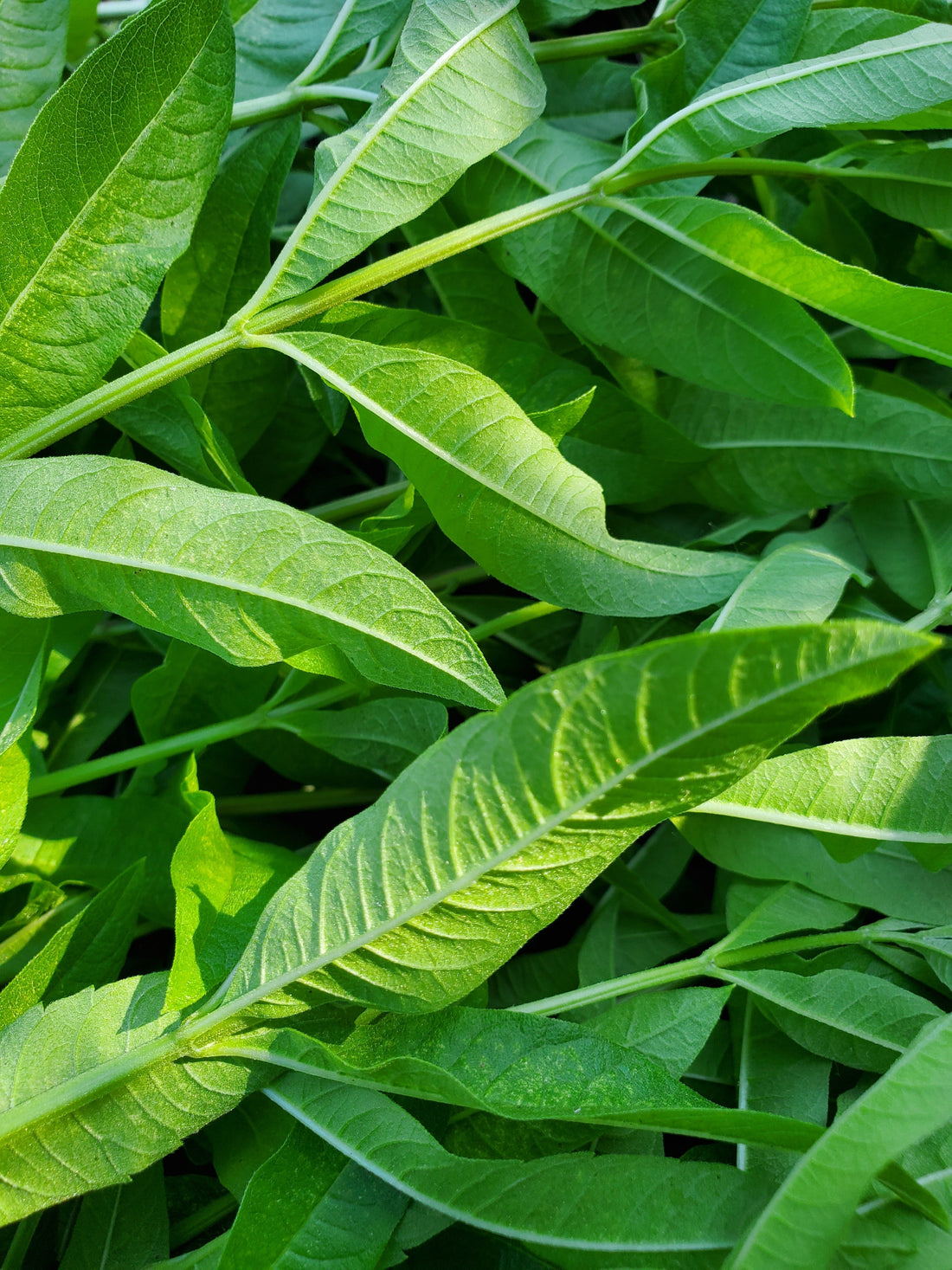
Lemon Verbena Monograph - Aloysia Citrodora
Share

Common Name - Lemon Verbena
Latin Name - Aloysia Citrodora Paláu, Aloysia Triphylla.
Folk Names - Latin America - Cedrón, Citro, Herba Luisa, Hierba Luisa. (3) Lemon Beebrush (4)
Family - Verbanaceae
Origin - The origins of this plant lay in the Inca culture of the Andes mountains of South America, where it to this day holds great cultural significance.The Kallawayas, a group of traditional healers in the Andes call the plant “Quechua” or “Wari Pankara”. (3) This beautiful and aromatic plant has been found all through South America, Europe and Africa, Asia and North America. Lemon Verbena was brought to Europe by the Spanish and Portuguese in the 17th century.
Parts of plant used - Leaf and flowering top
Taste - Citrus, lemony, astringent
Energetics - Cooling, drying(1)

Medicinal actions - Anti-inflammatory, antioxidant, antimicrobial, antispasmodic, carminative, astringent, digestive tonic, febrifuge, cardiotonic, neuroprotective, nervine, sedative, expectorant, anticancer (antimutagenic, antigenotoxic, and antiangiogenic), analgesic, hypotensive (1)
Botanical description - A deciduous shrub, growing to a maximum of 5 metres. The leaves are very fragrant, lanceolate, arranged in threes at each node, hence one name origin is Aloysia Triphylla. 6 to 8cm long, with smooth margins, pale green in colour. The many small flowers are pale purple, blooming during late summer in slim terminal panicles. (2)
Types of preparations - For a lovely Tea, use 10 fresh lemon verbena leaves steeped in a teapot (4 cups) for 5-10 minutes. Drink 3–6 cups daily. When using dried plant material, half the amount (1) Tincture - (1:4, 40% alcohol, dried herb) 1-2 mL in water or under the tongue 2–3 times per day (1)
Culinary Uses - Tea, baking, cake icings, liqueur, dips and spreads.
Safety - Photo toxicity could occur on skin exposed to sunlight. So only use the lemon verbena oil as whole oil used on the skin in the evenings. (2) Not for use if pregnant or breastfeeding (1)
My notes on Lemon Verbena - This past year has been a difficult one, I have had 2 elder pet go over the rainbow bridge, and experienced chronic pain flare ups and some injuries. Lemon Verbena automatically enhances my mood, and alerts my senses. More times than I can remember, I wandered around my gardens crying and found myself at the Lemon Verbena patch. I would give the plants a shake or pick a few sprigs while processing my grief and found the aroma to be very uplifting and grounding. I felt hope near these plants. I also note this plant is tropical and does not do well in cold areas. I live in a very cold area in the north of so called Canada, and see Lemon Verbena as a tough, resilient and adaptable plant after seeing it overwinter in -40 degree celsius temperatures. (heavy mulch !) This plant is a reminder I am also strong, resilient and adaptable.
Growing Lemon Verbena - Warm climates, sandy soil, and protection from the wind. Grow in full sun in cooler areas and semi-shade in hotter climates. In cooler climates Lemon Verbena requires frost protection. Temperatures below –6 degrees Celsius will kill Lemon verbena. Usually grown from softwood cuttings, taken just as buds shoot in Spring. 2-5cm long. Prune in early Winter, to shape the bush and remove dead wood. Grows well as container plant (2) I grow Lemon Verbena in zone 3, northern British Columbia in my greenhouse as well as outside and it does very well. I admit our cold northern nights the outside plants are not happy, and dont grow as large as the greenhouse plants. The outdoor plants do flower and survive our climate, where our greenhouse plants are small trees.

Life cycle - Perennial, will require heavy mulching or taken indoors in cold climates.
Propagation method - Softwood cuttings can be taken from the new growth in late spring. Or by semi-hardwood cuttings in late summer or early autumn. Grow on in pots for the first two years so the plant can mature in a frost-free environment. Can be grown from seed in tropical climates.(1)
Harvesting - In my region of zone 3 northern Canada, I start harvesting leaves in July all the way to September. I have noted you can trim Lemon Verbena generously and it grows back incredibly fast. I dry Lemon Verbena in a dehydrator on low temperature or hang in bunches in a dark well ventilated area. The herb dries very quickly and retains its aroma fantastically.
References/Research
1 - Maria Christodoulou, Lemon Verbena Monograph - learningherbs.com
2. Herb federation of New zealand - https://herbs.org.nz/herbs/lemon-verbena/
3. Science Direct - Aloysia Citrodora - An Overview. 2018 Journal of Ethnopharmacology, Roodabeh Bahramsoltani and Mohammed Hosein Farzaei.
4.Plants for a Future - https://pfaf.org/user/Plant.aspx?LatinName=Aloysia+citriodora